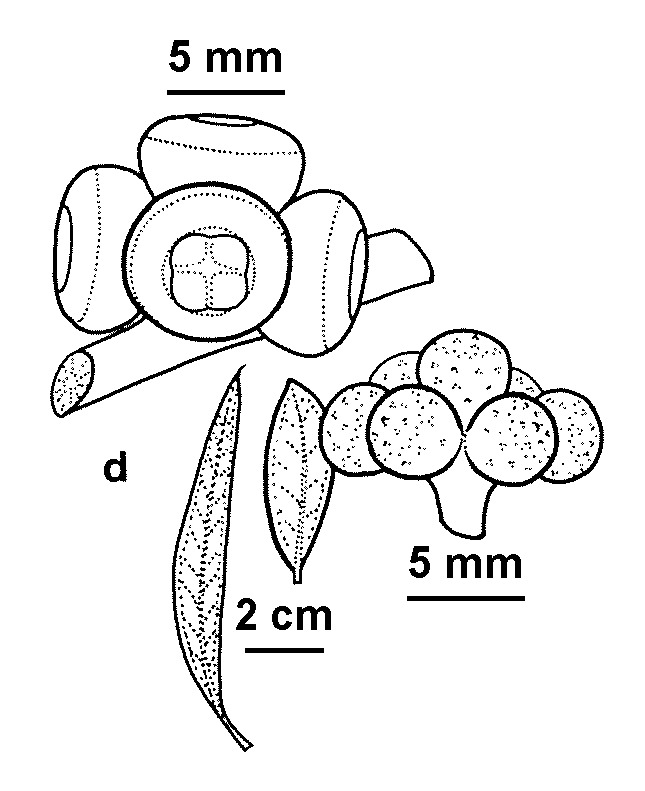Eucalyptus kybeanensis
Maiden & Cambage Mallee AshMallee or rarely small tree to 5 m tall; bark rough in short stocking, smooth above, often ribbony. Juvenile leaves sessile, opposite for few pairs then petiolate, alternate, elliptic to lanceolate, to 10 cm long, 2 cm wide, glossy, green; adult leaves petiolate, alternate, lanceolate or falcate, usually held erect, 5.5–9 cm long, 0.7–1.2 cm wide, concolorous, glossy, green; intramarginal vein remote from edge; reticulation very sparse, with numerous island oil glands. Inflorescences axillary, unbranched, 7–11-flowered; peduncles obscure or to 0.5 cm long; buds sessile or shortly pedicellate, clavate to turbinate, warty, to 0.5 cm long, 0.4 cm diam., no scar (single operculum); operculum hemispherical or flattened; stamens inflexed; anthers dorsifixed, reniform; ovules in 2 vertical rows; flowers white. Fruit sessile, hemispherical to obconical, to 0.5 cm long, 0.8 cm diam.; disc more or less level; valves 4 or 5, rim level; seed pale brown, glossy, smooth, pyramidal but distorted by one curved face, hilum terminal. Flowers Sep.–Dec.
EGL, EGU, HSF, MonT, VAlp. Also NSW. Restricted to mountain peaks, e.g. Mt Useful, Mt Skene, Mt Seldom Seen, Brumby Point, where often locally dominant in subalpine mallee scrubs.
A green mallee-ash unique in the Victorian high country with its slender habit and erect glossy green leaves. Its squat, sessile buds and fruits and densely round-glandular leaves distinguish it from the true green mallee-ashes, e.g. E. stricta.
Brooker, M.I.H.; Slee, A.V. (1996). Eucalyptus. In: Walsh, N.G.; Entwisle, T.J., Flora of Victoria Vol. 3, Dicotyledons Winteraceae to Myrtaceae, pp. 946–1009. Inkata Press, Melbourne.
 Spinning
Spinning

